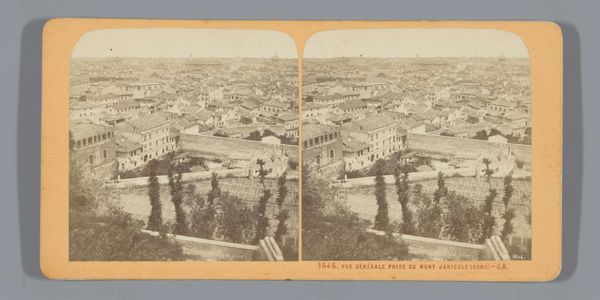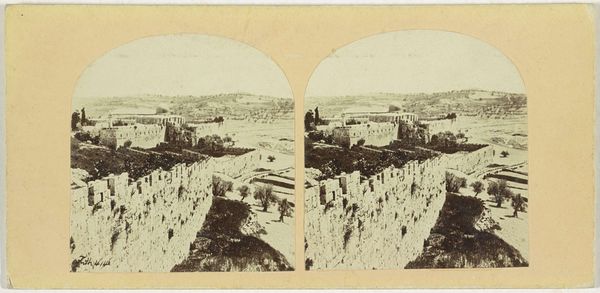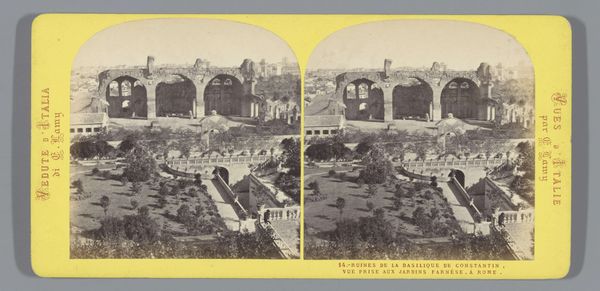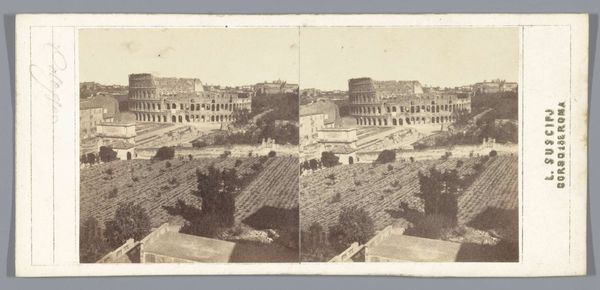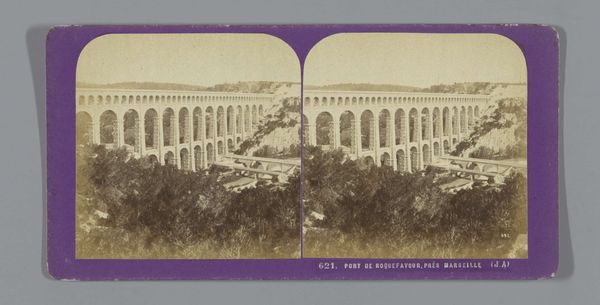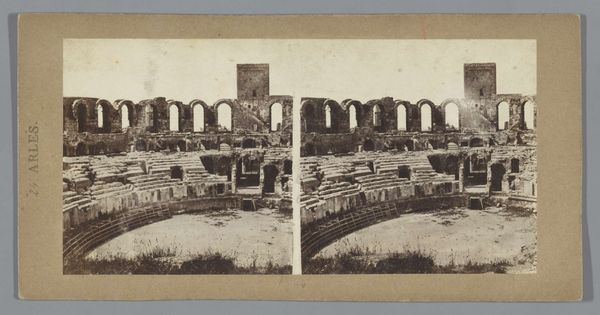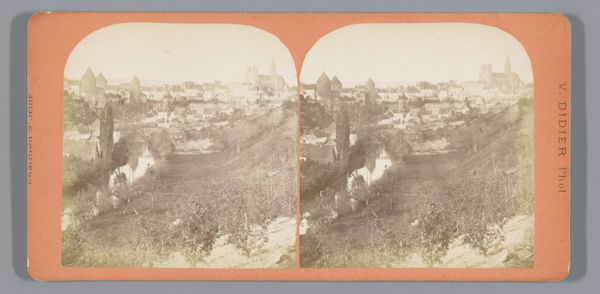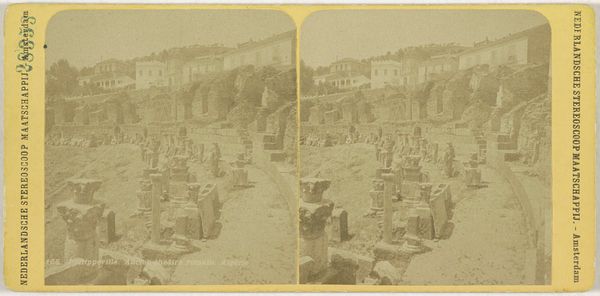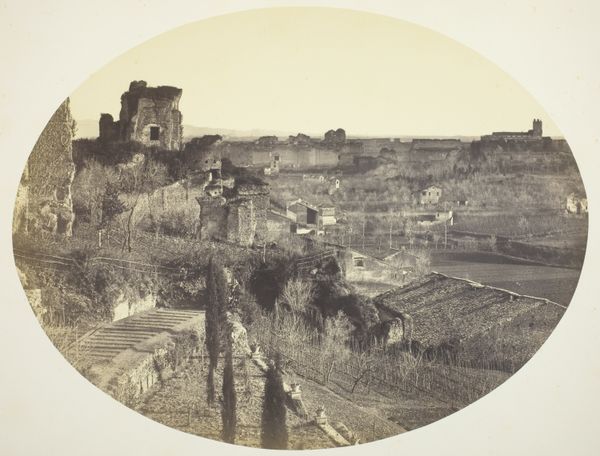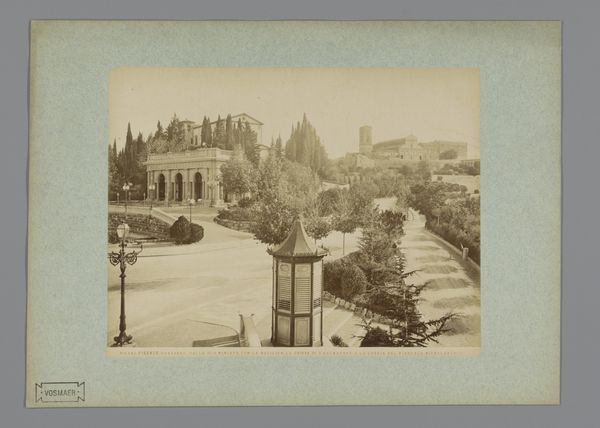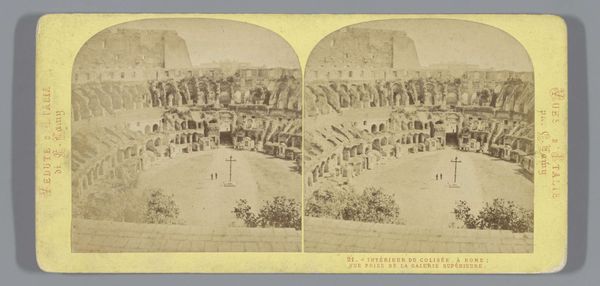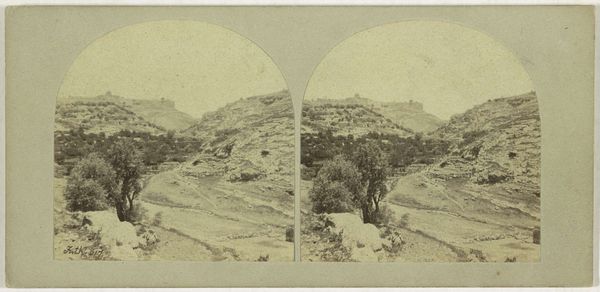
print, photography
#
water colours
# print
#
landscape
#
photography
#
cityscape
#
watercolor
Dimensions: height 85 mm, width 170 mm
Copyright: Rijks Museum: Open Domain
Curator: Looking at V. Didier’s stereoscopic print, “Gezicht op Semur-en-Auxois,” made sometime between 1860 and 1880, I’m immediately struck by how muted the tones are, like a faded memory. Editor: Yes, there's a ghostly quality. It reminds me of early experiments with photography where the image teeters between clarity and suggestion. The arched bridge dominates—a man-made intervention dramatically imposing itself upon the landscape. Curator: The technical aspects intrigue me. This stereoscopic format was popular then, meant to simulate depth, thus altering spatial perception. How does this affect our interpretation of Semur-en-Auxois as both a tangible place and a representation? Editor: Considering the historical context, it places this image within a burgeoning era of tourism and documentary. We see cities like Semur-en-Auxois romanticized—packaged for consumption. The framing reinforces the picturesque view, designed for middle-class appreciation. Curator: Precisely. But even beyond the context, I'm struck by the geometric play—the rhythm of the arches, the stark contrast between the dark vegetation and the pale stone. It is a fascinating negotiation between order and organic form. What’s the social resonance, do you think, of idealizing places like Semur-en-Auxois? Editor: Well, in a rapidly industrializing world, these scenes offered a glimpse into an untouched past, an escape from urban chaos. Didier’s photograph catered to a specific yearning, perhaps an idealized vision of France's historic regionalism that was slowly dissolving. And how can one disentangle the relationship between the then and now of seeing such places and constructions of visual taste? Curator: It’s a perfect crystallization of various vectors operating at that time. Thanks for offering a look that contextualizes its initial production. Editor: And you for that deeper look at how the architectural space is portrayed in order to elicit that very appeal to the photographic object itself.
Comments
No comments
Be the first to comment and join the conversation on the ultimate creative platform.
